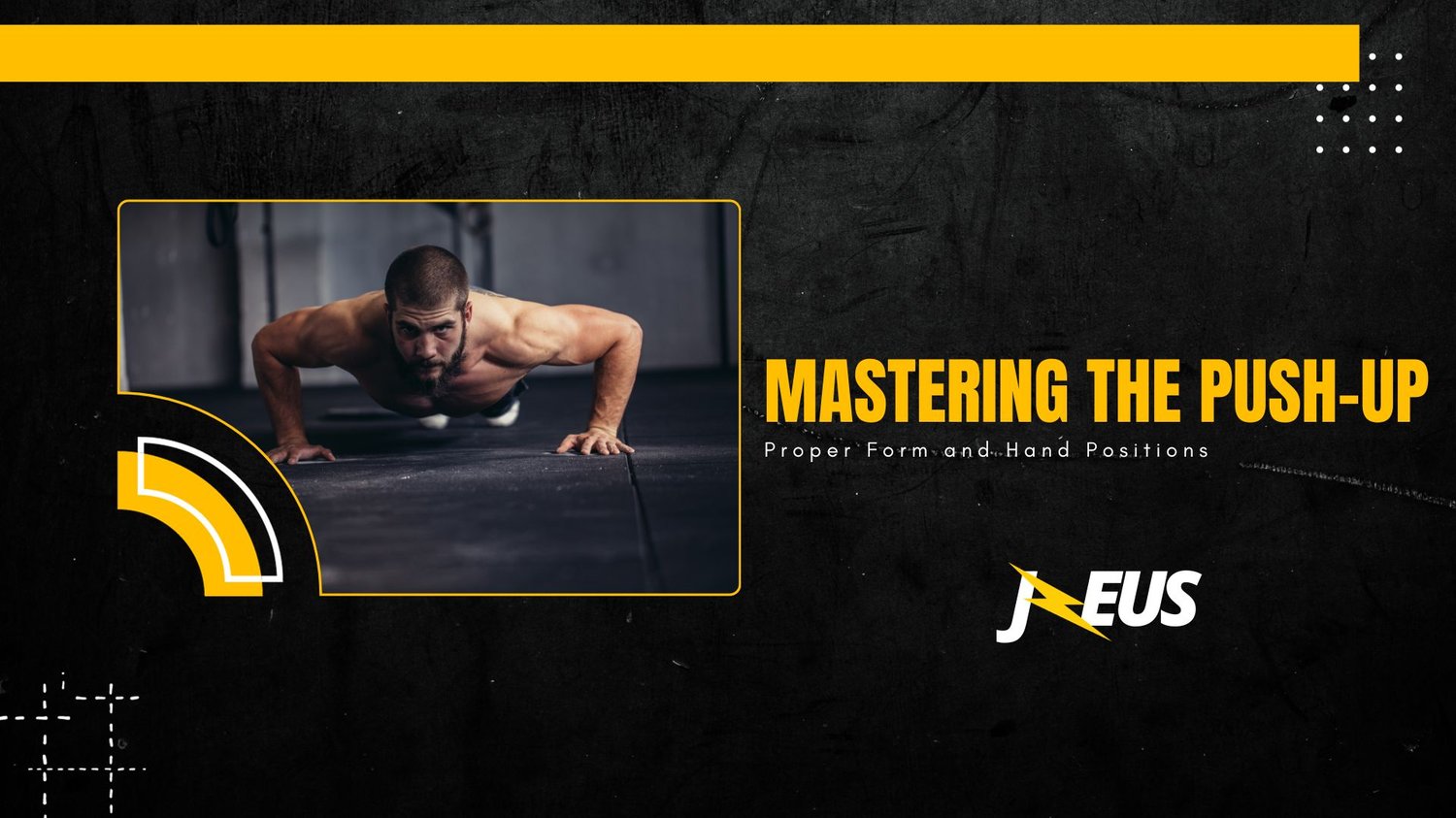Push-ups are one of the most effective and accessible exercises for building upper body strength. They require no equipment, can be done virtually anywhere, and are an excellent way to target the chest, shoulders, triceps, and core. However, to get the most out of your push-up routine, it's crucial to understand and maintain proper form, including hand positions. In this blog, we'll dive into the world of push-ups, discussing the correct form and various hand positions to help you get the most out of this timeless exercise.
The Basics of Proper Push-Up Form
Before we explore different hand positions, let's establish the fundamental principles of proper push-up form:
- Body Alignment: Your body should form a straight line from head to heels. This means keeping your back, hips, and legs in alignment.
- Hand Placement: Place your hands slightly wider than shoulder-width apart. This position helps engage the chest muscles effectively.
- Hand Position: Your hands should be placed directly under your shoulders to maintain proper joint alignment.
- Head Position: Keep your head in a neutral position, looking at the floor about a foot in front of your hands. Avoid tucking your chin into your chest.
- Elbow Angle: Your elbows should form an angle of around 45 degrees to your body, not flaring out to the sides.
- Range of Motion: Lower your body until your chest nearly touches the ground or your elbows reach a 90-degree angle, whichever comes first. Then push yourself back up to the starting position.
Variations in Hand Positions
Now that you have a solid grasp of the essential form, let's explore various hand positions that can target different muscle groups and intensify your push-up workout.
- Standard Hand Position: This is the classic push-up position with your hands directly under your shoulders. It primarily engages the chest and triceps.
- Wide Hand Position: Placing your hands wider than shoulder-width apart increases the emphasis on your chest muscles and requires more shoulder mobility. It's a great way to build a broader chest.
- Close Hand Position (Diamond Push-Up): Position your hands close together, forming a diamond shape with your thumbs and index fingers. This variation targets the triceps and inner chest muscles. It's a more challenging option.
- Offset Hand Position: In this variation, one hand is positioned slightly ahead of the other. This engages the chest and triceps differently, providing an excellent way to work on muscular imbalances.
- One-Handed Push-Up: This advanced version involves placing one hand behind your back while performing the push-up with the other. It significantly increases the load on the working arm and enhances core stability.
- Fist Push-Up: Make a fist with each hand and perform push-ups on your knuckles. This reduces wrist strain and places more emphasis on the chest and triceps.
Remember to start with the standard hand position and progress to more advanced variations as you become more comfortable and stronger.
Conclusion
Mastering the push-up, with its proper form and various hand positions, can be a highly rewarding part of your fitness routine. It's a versatile exercise that can be adapted to your current fitness level and goals. Whether you're looking to build strength, increase muscle mass, or improve your overall fitness, the push-up offers an effective way to achieve your objectives. Always maintain proper form to prevent injury and get the best results from your efforts.


